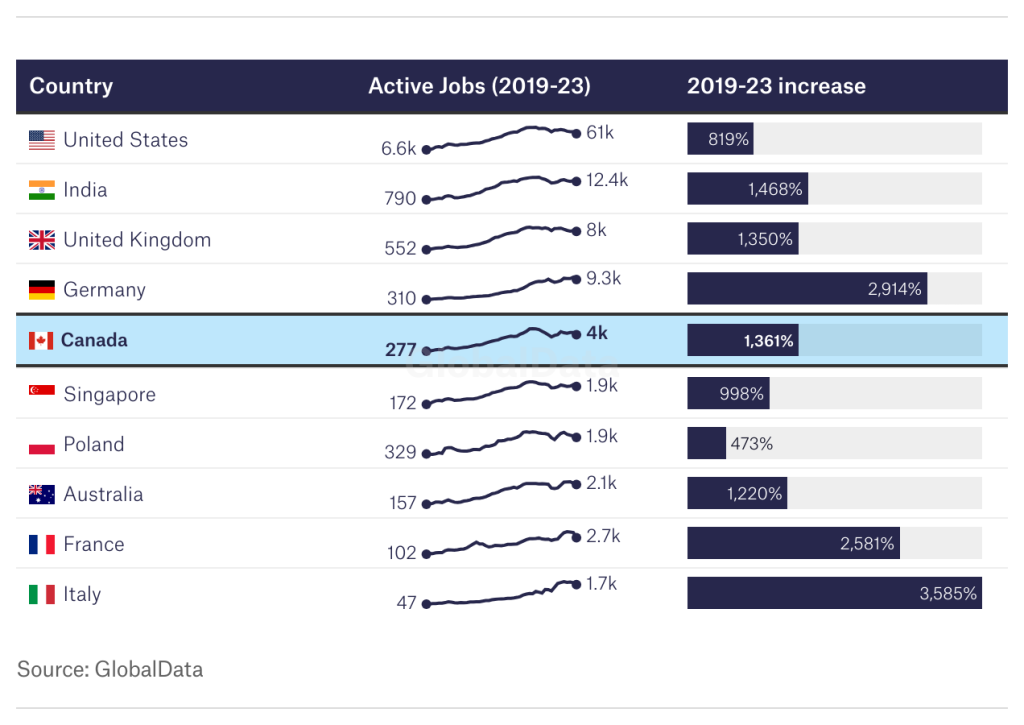
Cybercrime is becoming a systemic threat to national and economic security – and the consequences of such attacks can be significant. Research curated by GlobalData[1] predicts that global cybercrime will top $10trn a year by 2025. New technologies such as AI and quantum computing are expected to complicate digital security in ways that today’s cybersecurity professionals cannot yet quantify.
As more systems are uploaded to the cloud, critical city infrastructure, and commercial and public services, are becoming increasingly vulnerable to attack. Ransomware attacks – where malware blocks access to systems until a ransom is paid – have become more aggressive and disabling, and experts suggest this is the most concerning problem for governments and business leaders.
No one is safe from attack and the consequences can be severely destructive. At the same time, there is a chronic and highly concerning labour shortage in the cybersecurity workforce, with estimates suggesting there are around 3.5 million job vacancies in the industry worldwide. Rigid hiring requirements and a lack of training has been one major roadblock to people developing the necessary cyber skills.
[1] GlobalData: Thematic Intelligence: Technology Cybersecurity, March 2023

A lack of financial and business support for female founders and entrepreneurs from ethnic minority communities has also put the brakes on growth in the cyber ecosystem – but there is some positive news. Brampton in Ontario, the fastest-growing city in Canada, is taking significant and trailblazing steps to address these challenges in a number of unique ways.
New education pathways because talent can come from anywhere
“It is just not the case that all cyber professionals must have advanced degrees in cyber,” says Charles Finlay, the founder and executive director of Rogers Cybersecure Catalyst, a first-in-Canada public-private initiative committed to helping the City of Brampton become a national centre of excellence in cybersecurity. “In many cases, workers with the right mindset and curiosity, but perhaps not the time, funds or opportunity to spend years completing a degree, can be trained in an agile environment using a mix of theory and practical learning.
“That is why the Catalyst was established – to create new education routes into cybersecurity to rapidly expand the talent pool. What has been really exciting to see is the diversity of people applying to take our programmes. We have had Uber drivers, nurses and chefs, those who have left school, as well as older workers – and many are new immigrants to Brampton, which is the fastest-growing city in the country right now.”
Finlay adds: “Newcomers may not be able to find jobs in the discipline they were originally trained for in their home countries, but their skills may be easily transferable and their lived experience will be hugely valuable in offering new perspectives in a threat situation. Our students are evidence that talent can come from anywhere, and it has been untapped for a very long time. This is unacceptable for many reasons but especially given the gaping hole in the cyber workforce, which constitutes a national and international emergency.”
By the end of this year, more than 600 cybersecurity professionals will have graduated from the Catalyst’s flagship programme – the largest cybersecurity workforce training initiative in Canada. Of those, about 80% will be from minority and underrepresented communities, and 60% will be women. In October, the organisation will welcome the first cohort of learners into Certifications for Leadership in Cybersecurity (CLIC), a new programme with a beefed-up curriculum, offering two globally recognised SANS GIAC certificates upon graduation, as well as training in the Catalyst Cyber Range.
Other world-first workforce training and advancement programmes have been launched by the Catalyst, including a unique partnership with the cyber education start-up Cyber Legends to offer cybersecurity education and skill development to K-12 students across Canada through interactive video games. A world-first cybersecurity executive education programme for women and non-binary leaders, in partnership with Mastercard, launched last year and will run again. More details are available in the attached whitepaper.

Meanwhile, nearby TriOS is also rising to industry demand, launching new practical technology programmes in IT and security administration and web development fundamentals that have been co-designed with employers to ensure employment upon graduation.
The Brampton effect
The City of Brampton, where 171 languages are spoken and 250 ethnicities have settled in the land of hockey and maple syrup, was already gaining a reputation for developing talent in technology before the Catalyst opened its doors downtown, recently branded the Brampton Innovation District, in 2019.
The School of Computer Science and Technology at Algoma University is high-calibre, while Sheridan College was the first Canadian university to offer a dedicated undergraduate cybersecurity degree, which features an eight-month co-op term.
Finlay saw an opportunity to build on these foundations and harness Brampton’s innovation-centric ‘test-and-learn’ spirit to create a comprehensive national hub for cybersecurity training, innovation and collaboration in the city, bringing the best of industry, government and academia together.
Co-located in the Brampton Innovation District, Rogers Cybersecure Catalyst is a partnership between Toronto Metropolitan University, Rogers Communications, the Government of Canada, Royal Bank of Canada and the City of Brampton. As a National Centre of Excellence, it works alongside tech accelerator programmes Brampton Venture Zone, Altitude and BHive and has, since 2021, been running the Catalyst Cyber Accelerator, Canada’s only cybersecurity-focused commercial accelerator, designed to help early-stage cybersecurity companies grow into industry leaders.
In two years, the Catalyst has graduated 45 start-ups whose products are helping to solve challenges like dark web monitoring, automated low-code digital security for small businesses and cybersecurity training for teenagers.
Finlay says: “We found that in the world’s most prominent cyber hubs – those driving the highest rates of employment, innovation and economic development – there was close collaboration between academia, industry and government; so I wanted to replicate that model. Another characteristic of these hubs is their highly diverse and youthful populations.
“Brampton’s population is the youngest in Canada and possibly of all the world’s most cosmopolitan cities, and its government is committed to entrepreneurship and innovation. Not many cities are actively planning what they will look like in 2040, but Brampton is. Painstakingly developed with its citizens, the Brampton 2040 Vision maps out in detail what its urban landscape, neighbourhoods, transportation, community identity and future jobs will look like.
“This is a favourable backdrop in which to create a cybersecurity ecosystem that we hope will one day be considered alongside some of the best in the world, like London, Silicon Valley and Tel Aviv.”



